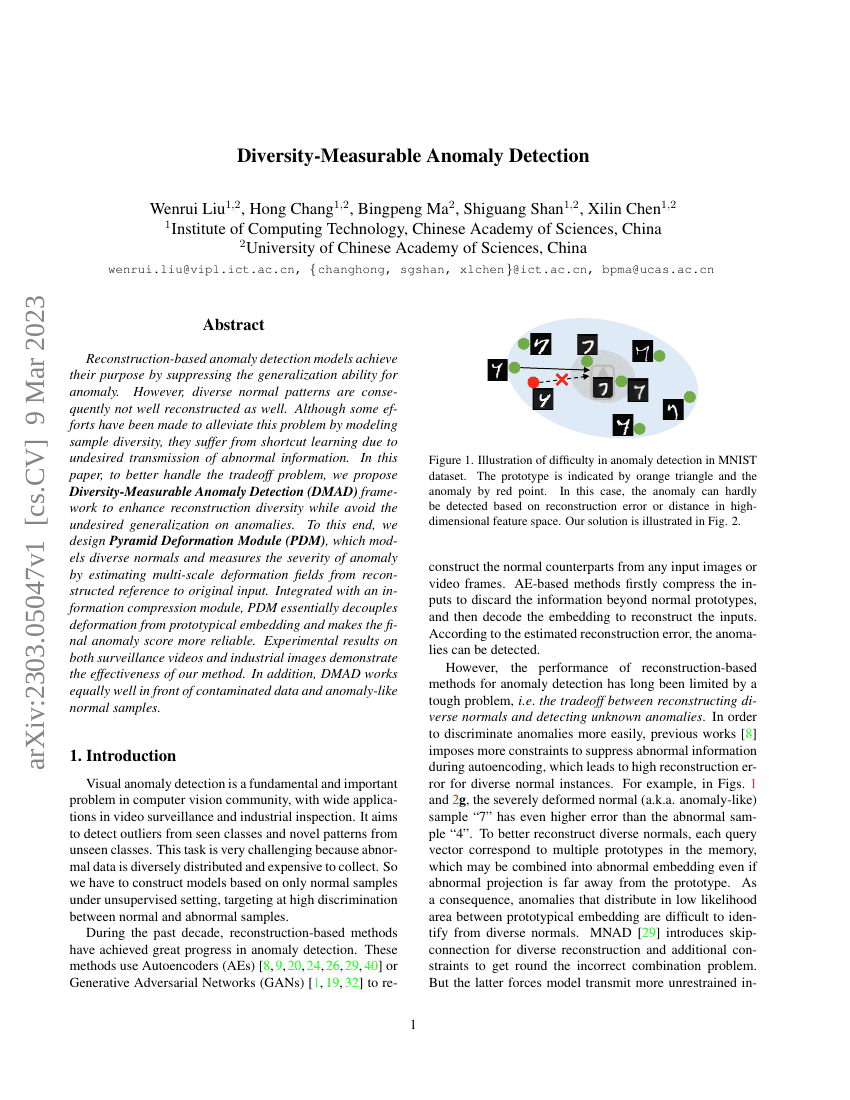Command Palette
Search for a command to run...
Wenrui Liu Hong Chang Bingpeng Ma Shiguang Shan Xilin Chen

Abstract
Reconstruction-based anomaly detection models achieve their purpose by suppressing the generalization ability for anomaly. However, diverse normal patterns are consequently not well reconstructed as well. Although some efforts have been made to alleviate this problem by modeling sample diversity, they suffer from shortcut learning due to undesired transmission of abnormal information. In this paper, to better handle the tradeoff problem, we propose Diversity-Measurable Anomaly Detection (DMAD) framework to enhance reconstruction diversity while avoid the undesired generalization on anomalies. To this end, we design Pyramid Deformation Module (PDM), which models diverse normals and measures the severity of anomaly by estimating multi-scale deformation fields from reconstructed reference to original input. Integrated with an information compression module, PDM essentially decouples deformation from prototypical embedding and makes the final anomaly score more reliable. Experimental results on both surveillance videos and industrial images demonstrate the effectiveness of our method. In addition, DMAD works equally well in front of contaminated data and anomaly-like normal samples.
Code Repositories
Benchmarks
| Benchmark | Methodology | Metrics |
|---|---|---|
| anomaly-detection-on-chuk-avenue | ConvVQ | AUC: 84.3% |
| anomaly-detection-on-chuk-avenue | DMAD | AUC: 92.8% |
| anomaly-detection-on-mvtec-ad | DMAD | Detection AUROC: 99.5 Segmentation AUROC: 98.2 |
| anomaly-detection-on-shanghaitech | DMAD | AUC: 78.8% |
| anomaly-detection-on-ucsd-ped2 | DMAD | AUC: 99.7% |
| anomaly-detection-on-ucsd-ped2 | ConvVQ | AUC: 90.2% |
Build AI with AI
From idea to launch — accelerate your AI development with free AI co-coding, out-of-the-box environment and best price of GPUs.